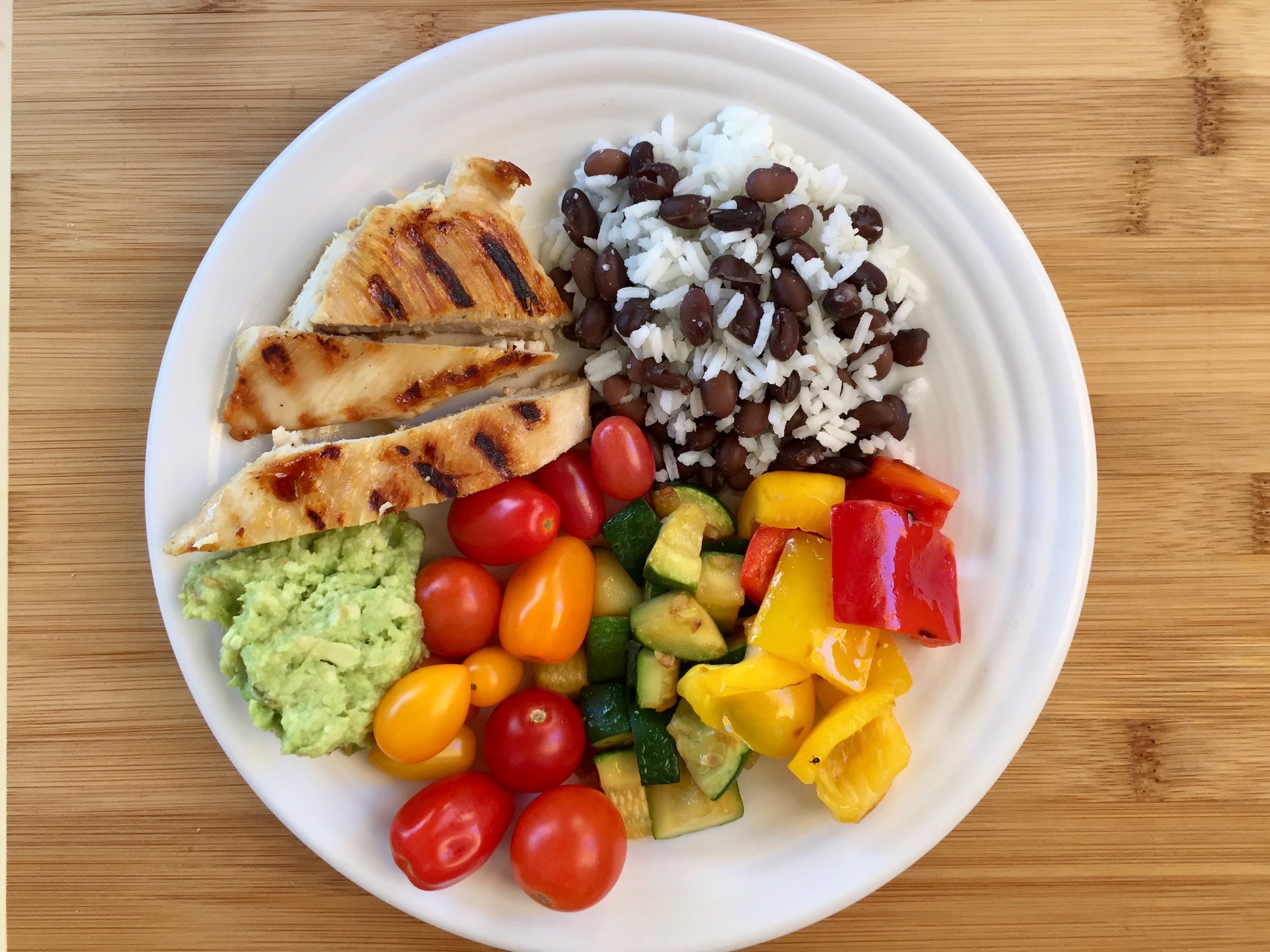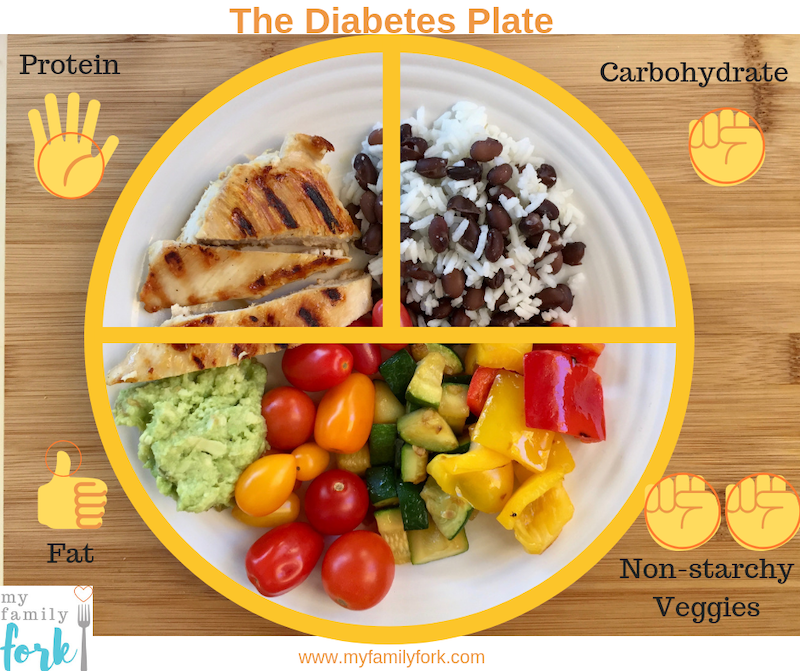November is Diabetes Awareness month. Almost everyone knows somebody with diabetes. 30.3 million people in the US have diabetes and almost 25% of those people are undiagnosed. It is estimated that a third of the U.S. population has prediabetes, a metabolic disorder that greatly increases one’s risk of developing diabetes, and almost 90% of them are not aware they have this condition. I work with many people with diabetes and prediabetes and have witnessed the power that nutrition and exercise have in managing blood sugar levels. Strong scientific studies also support the primary role of diet and exercise in diabetes prevention and management.
The foundation of the advice I share with patients can apply to us all, it’s called the Plate Method of eating. I like it because it is simple and straightforward. It allows for flexibility and personal choice to adapt to almost any situation. It permits space for intuitive eating practices, allowing you to tune in to your body’s needs and desires within a basic framework. It creates a balanced meal. The first step is to choose your plate. A nine-inch plate, or a plate the size of your two hands together is a good guideline. Fill a quarter of your plate with carbohydrates, a quarter with protein and a half with non-starchy vegetables. Now, let’s talk details!

Carbohydrates
Carbohydrates are starches or sugars in food. Foods high in carbohydrates include grains, legumes, starchy vegetables (potatoes, sweet potatoes, corn and peas), fruit, some dairy (milk and yogurt) and sweets. Complex carbohydrates are the best, most nutritious carbohydrates you can choose because they are high in fiber. They include whole grains, legumes and most fruits. A fist-sized portion of complex carbohydrates with each meal will help you maintain steady energy levels.
Protein
Protein is important for millions of our body’s processes to function normally. A variety of foods contain protein. Beef, pork, chicken, fish, cheese and eggs are some examples of proteins derived from animals. Nuts, seeds, tofu and tempeh are examples of vegetable sources of protein. A palm-sized portion of protein will help you feel satisfied.
Non-starchy Vegetables
Vegetables are crucial for health and disease prevention due to their micronutrient, phytochemical and fiber content. These nutrients keep us well and prevent disease. Eat vegetables that are in season to obtain a variety of nutrients. A vegetable portion the size of two fists will keep you in good health.

Whether or not you have diabetes or prediabetes, using the Plate Method will keep your meals balanced and your body healthy. The possibilities are endless—you get to choose which foods you like from each food group to stay satisfied and happy!


